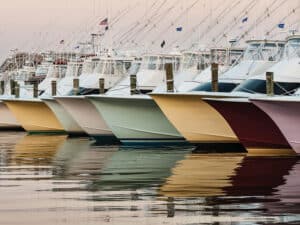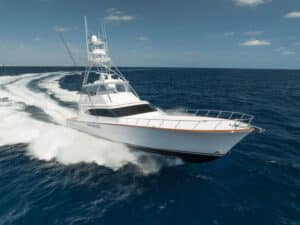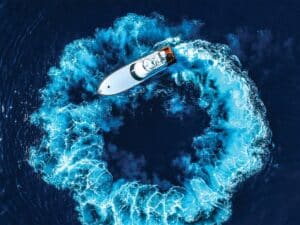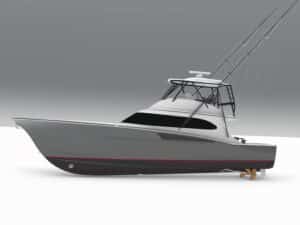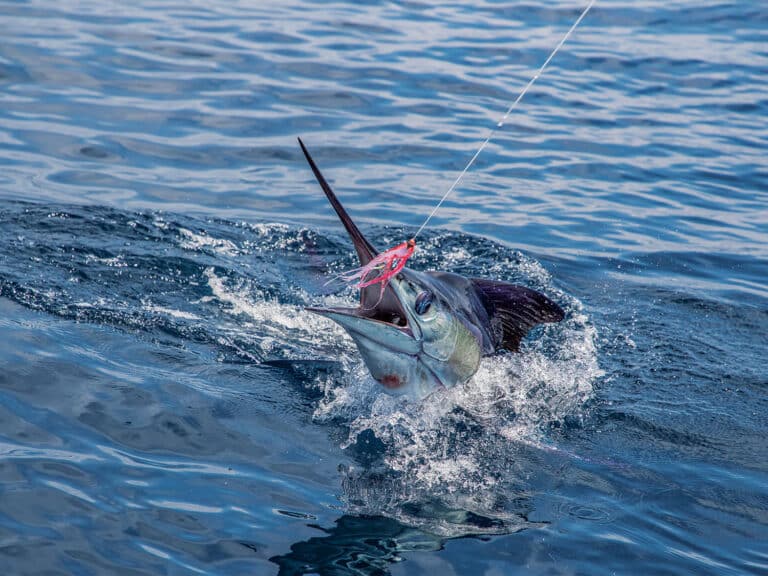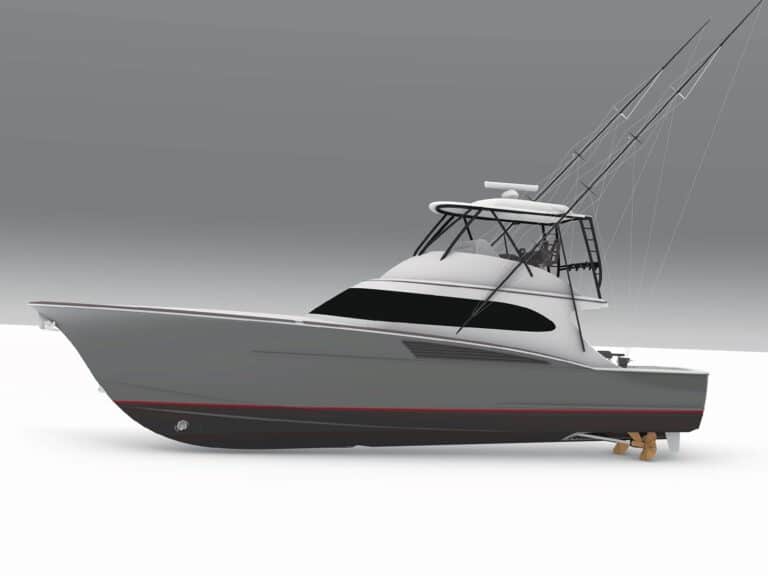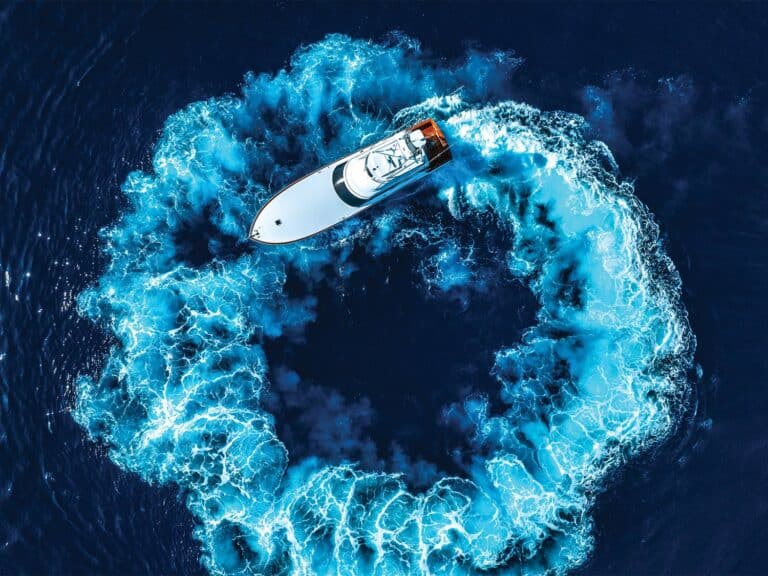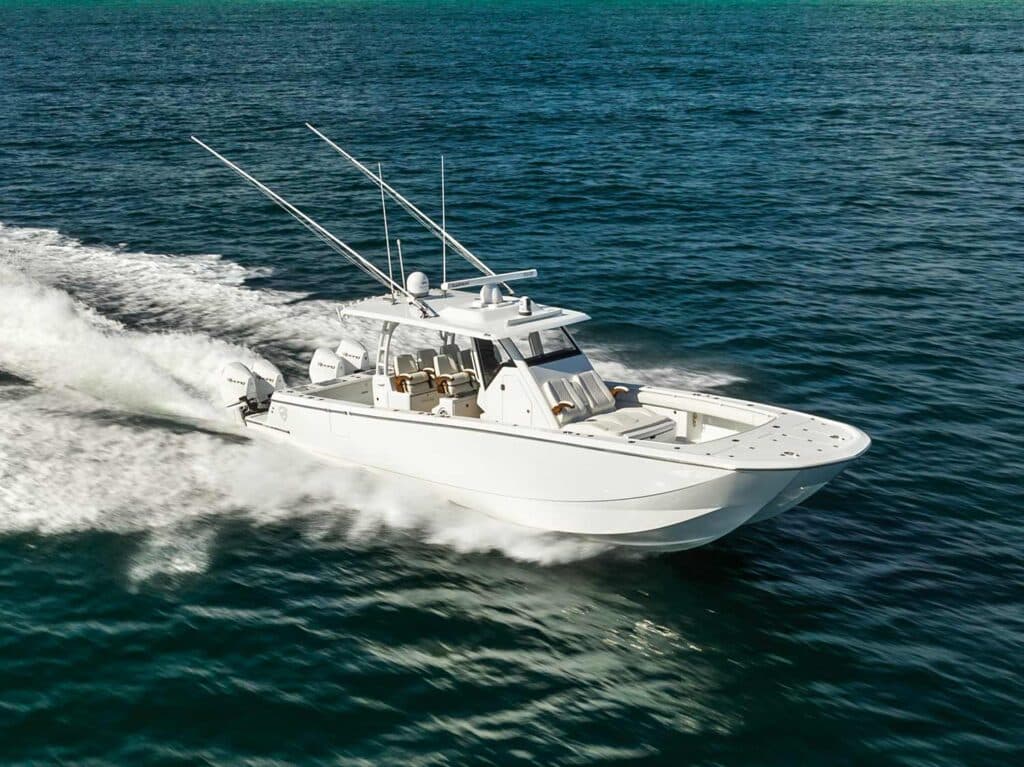
Special delivery: Sign up for the free Marlin email newsletter. Subscribe to Marlin magazine and get a year of highly collectible, keepsake editions – plus access to the digital edition and archives.
Having a good relationship with a boatbuilder is always a great first step when you’re ready to move into a new ride. That was the case with Gary Smith, a lifelong big-game fisherman from Fort Walton Beach, Florida, and owner of a 40-foot high-performance catamaran from Barker Boatworks.
“I had owned a 26 Barker and was just super impressed with not only the boat but also the people at the factory in Sarasota,” he says. “They showed me the drawings for the 40 they were building and asked if I’d be interested. I had never even stepped foot on a cat before, but I said sure, just based on our past relationship.” Having fished plenty of days and tournaments on his family’s 66-foot Viking, Smith wanted to bring that big-boat aesthetic to the new build while also capitalizing on the inherent features of a catamaran design, namely plenty of real estate and high speeds, especially in the short, steep chop that’s most frequently encountered in the northern Gulf of Mexico.
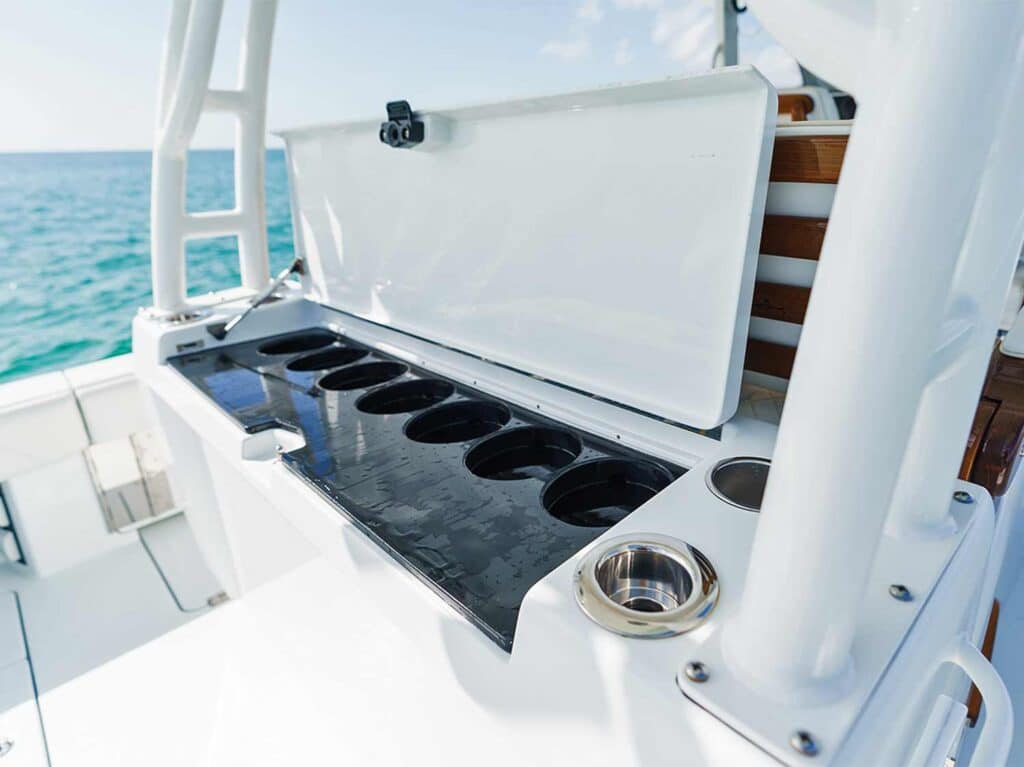
Both of those factors can be attributed to the Michael Peters-designed asymmetrical cat hull, according to Barker Boatworks president Kevin Basirico. “In a conventionally designed catamaran, you essentially have two V-bottom hulls side by side. In an asymmetrical boat, you’re splitting a single V-bottom down the middle, which results in a sponson with a flat inside edge and an angled outside edge.” The result is a superior ride and handling characteristics, and Peters should know—his cat designs have won 18 world championships on the high-performance racing side.
To take full advantage of the speedy characteristics, Smith and Barker agreed on a power package of quad Mercury Racing 450 hp outboards, as well as racing jack plates to completely dial in the motor heights for maximum performance. The result is an 80-mile-per-hour rocket ship that has the ability to cruise anywhere from 40 to 60 miles per hour depending on the sea conditions. “The speed was one thing that really impressed me with this boat,” Smith says. “When we’re fishing out of Destin on the big boats, we’re doing multiday trips to the rigs to go marlin and tuna fishing. With this boat, when we have a window of good weather, I can blast out there and get back in a day, which is important with a busy work schedule. We have eight new FADs that are 60 to 80 miles offshore, and we can be live-baiting for blue marlin out there an hour after leaving Destin Pass.”
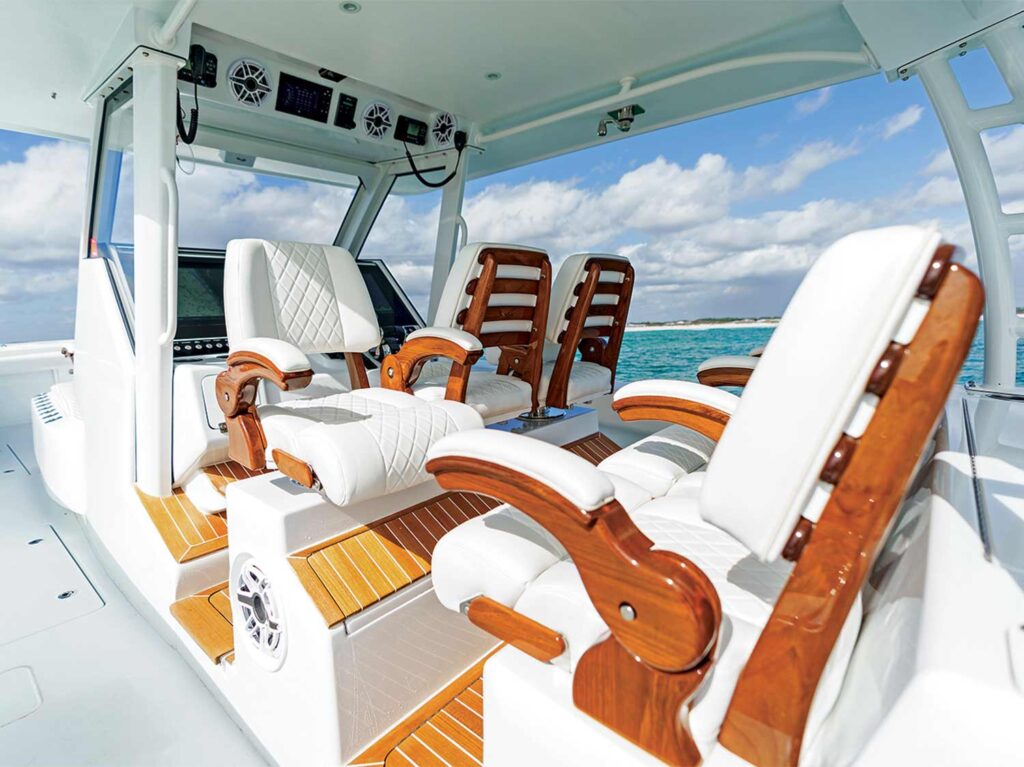
To accommodate that live-bait mission, the owner and builder collaborated on an option that definitely ups the boat’s wow factor: a series of seven extra-large tuna tubes built into the aft side of the enormous leaning post, concealed beneath a flip-up lid. The tubes are plumbed to a customized Hooker Electric sea-chest setup that also supplies raw water to additional livewells in the boat’s deck and transom. “Ten years ago, everyone in the Gulf was pulling lures,” Smith says. “That’s all changed—today it’s all live-baiting, and we’ve caught plenty of nice fish using this setup. It works really well.”
More big-boat touches abound, from the teak-trimmed helm deck and 24-inch Garmin multifunction displays to the custom Release Marine seating: two rows of luxury, with the two forward outboard seats able to swivel in any direction (watching the baits has never been this comfy). And because tuna and bottomfish are frequently on the target list, the boat’s fish boxes are cavernous, with two forward in the bow area and two more amidships. “I fish a lot with my wife and daughters, who love to deep-drop,” Smith says. “I enjoy it because it’s a pretty easy way to fish—we just plug in the electrics, and all I have to do is unhook fish. They love the boat because there’s plenty of room, and it’s also very stable in the ocean.”
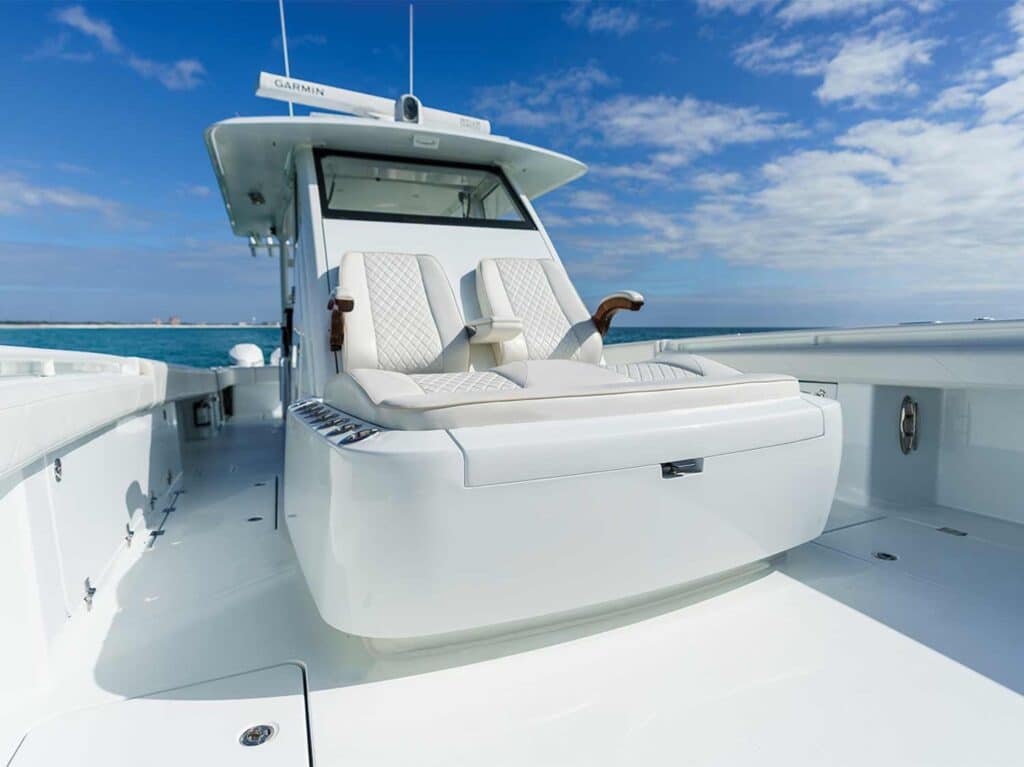
The quality of the rig’s construction also shines through. According to Basirico, only the highest-quality components are used in any Barker build, which feature yacht-quality fit-and-finish throughout.
“Sometimes a customer will come to us with a suggestion for something better, and we’ll incorporate it in our future boats,” he says. It’s a sentiment that Smith echoed as well. “We were able to work with them on some features that they hadn’t done yet on any of their builds, and [the design team] never said no,” he says. “It was a lot of fun working on this boat, getting everything just right.” And yet it’s a relatively simple design, without a bunch of extra systems that require constant maintenance or repair.
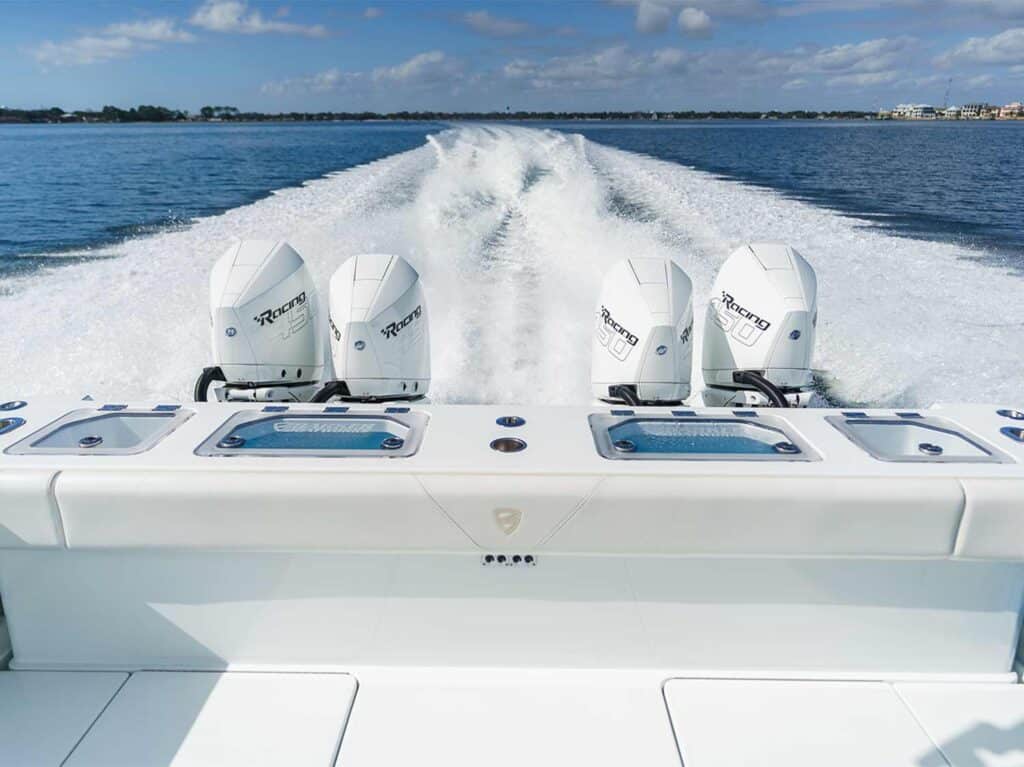
Since taking delivery of Hull No. 2 of that model following the Palm Beach Boat Show in 2021, Smith has tallied some incredible catches, with many more to come. And that tongue-in-cheek name? There’s nothing slow about Slowmocean, that’s for sure.
